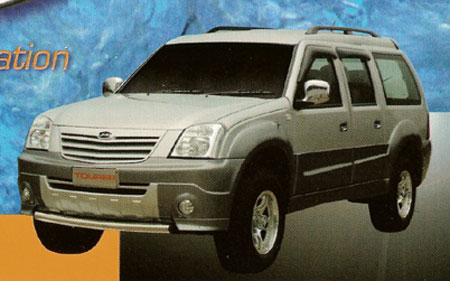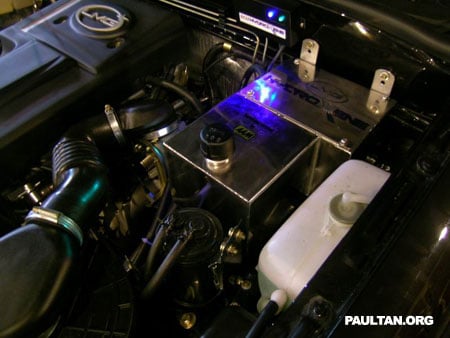
Some of you may remember a piece of news in July where a team of Universiti Sains Malaysia researches led by Dr Syamsul Rizal Abd Shukor came up with a way to produce hydrogen in a system compact enough to be fitted into a car. The system involved using waste aluminium metal and sodium hydroxide to separate water into it’s components – hydrogen and oxygen.
While I’m not sure if the new Hydroxene system in LMG’s new pick-ups and SUVs are based on the results of this USM research, it works very similiarly.

Click the image above for a larger diagram from LMG explaining how the Hydroxene technology works. Hydrogen fuel has been researched extensively by both Mazda with their Hydrogen Renesis engine as well as BMW with their hydrogen powered V12 7-series, but these technologies never made it into the production line because of trouble separating hydrogen from water.

Any of you remember the Mercedes Benz F600 Hygenius Concept I posted a long time ago? That car ran on hydrogen as well. Where to get this hydrogen has always been a problem. LMG’s on-board electrolysis device could be the catalyst to a new generation of fuel saving hybrids. For now, LMG’s system runs on a mix of both petrol and hydrogen, but a pure hydrogen system would definitely be possible. The mixture of petrol and water results in an effective reduction in fuel consumption of up to 50%. These systems have been available as a bolt on device before, but this is likely the first system that comes with a production car.
Read more about the new LMG vehicles:
LMG Trekker Details
LMG Tourer Details
Related Readings:
HFT Sdn Bhd’s hydrogen fuel system
Looking to sell your car? Sell it with Carro.


AI-generated Summary ✨
Comments are generally skeptical about the "LMG Tourer with Hydroxene technology," with many questioning the scientific basis and practicality of using hydroxene as a fuel. Several commenters highlight that splitting water into hydrogen requires significant energy, making claimed fuel savings questionable. There is doubt about whether the technology is real or just a marketing gimmick, with some pointing out that similar concepts have existed for decades and questioning the transparency of the developers. Others express national pride that the technology is Malaysian-made, but many remain cautious and demand thorough testing and proof before believing in its effectiveness. Concerns about reliability, high production costs, and the possibility of being a mere promotional stunt are prevalent, with a shared sentiment that skepticism is justified until proven otherwise.